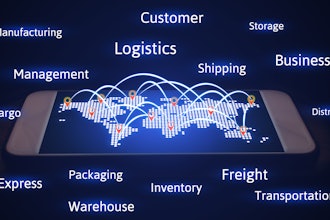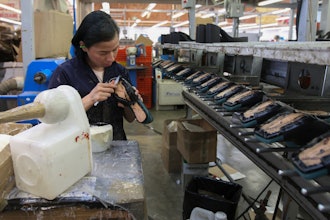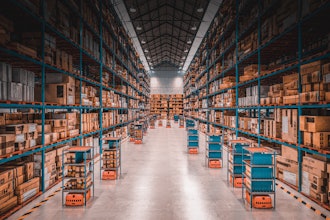Where Will You Be in Five Years? Four Strategies for Staying an Indispensable Piece of the Supply Chain
With manufacturing companies becoming more technologically sophisticated and easy to work with, some retailers have begun bypassing wholesale distribution companies entirely and going straight to the manufacturer for goods and materials. Some manufacturers are also more directly selling their own goods, as setting up an online shop now takes a matter of days or even hours thanks to simple ecommerce platforms and templates. This suddenly makes the manufacturer and wholesale distributor competitors, instead of merely different points on the supply chain. Some could say that it even diminishes the need for the wholesale distribution industry all together.
Distributors are definitely feeling the heat; according to research commissioned by Exact, the top two challenges wholesale distributors are facing include pressure on prices due to online competition and the competition from suppliers through direct sales. To minimize these challenges and avoid becoming obsolete, wholesale distributors need to take steps to modernize – and in some respects reinvent – their businesses. It’s about simultaneously enhancing structure and control over day-to-day business operations so costs are contained on all fronts, while growing and evolving service offerings to align with customer tastes and demands
Here are the key steps that distributors can take to both minimize the competition and remain an indispensable piece in the supply chain:
- Differentiate yourself with product and service: Retailers have many options for their distributor of choice, so it’s essential to differentiate yourself from the competition by adding so much value to your customers’ businesses that they never need to look elsewhere. Make a service-level commitment and meet it by using business software that allows you to keep track of deliveries from anywhere at any time, while keeping the customer informed every step of the way. Good customer service goes beyond delivering on time. Create product offerings that are tailored for your customers. Gather all essential customer data like contact reports, communications and quotes using CRM tools to get a 360-degree view. By integrating all processes into one system, collecting this data is easy, allowing you to deliver a more tailored offering.
- Implement digital platforms your customers love using: Amazon has revolutionized e-commerce and conditioned everyone to expect convenient, digital shopping via a few quick clicks. Infuse this flavor of commerce into the purchasing process you use with customers and partners and implement digital commerce platforms and interfaces. Taking further cues from Amazon, allow for one-click reordering for customers. Treat these digital investments as a must-have, not a nice-to-have. A study by UPS confirms that distributor buyers want to shop online, and aren’t afraid to look elsewhere if their previous distributor of choice doesn’t offer this option; the study noted that 38 percent of buyers have already gone outside of their normal supply base to buy online from someone for the first time.
- Take automation to the next level: Most savvy distributors know that automation extends beyond the warehouse. As such, many competitive distributors have automated some key functions of their businesses, like material requirements planning and forecasting, and are seeing gains in productivity and efficiency. Revisit your automation strategy and take the time to identify additional areas for automation. Ensure that the way you handle stock is fully optimized. Look at your internal accounting processes and ensure they are comprehensive yet efficient. Avoid duplicated work and use a single online system for business processes where your team will enter data once and have it available anywhere, for all the right people to access it whenever they need it.
- Let integration fuel information sharing: As a distributor, it’s critical to streamline all communications and information sharing between customers and suppliers. Without linking technology systems and processes, it will be challenging to view and share critical business data like stock levels, price lists, product ranges and order statuses.
Evolving competitive conditions and rapid technology innovation has recently changed the wholesale distribution industry as we know it. Take concrete steps soon to evolve with it, or you may be left behind.
Kae Kronthaler-Williams is general manager of Exact U.S. Cloud Solutions.























